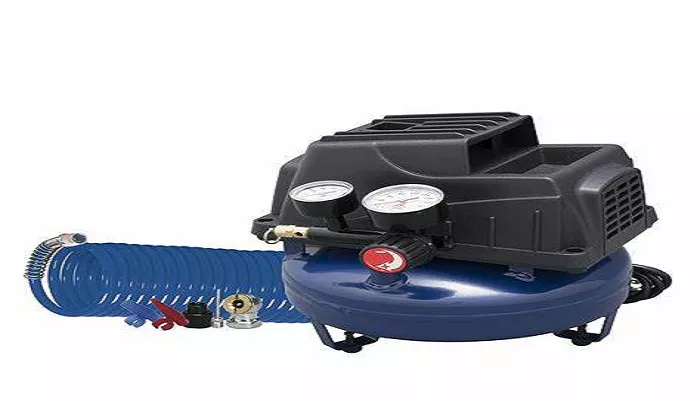Pancake compressors are a popular type of portable air compressor known for their compact, flat design and versatility. They are widely used in construction, automotive repair, woodworking, and DIY projects due to their efficiency and ease of use. This article provides a detailed, professional analysis of pancake compressors, including their design, applications, advantages, and limitations.
What Is a Pancake Compressor?
A pancake compressor is a small, portable air compressor with a flat, round tank that resembles a pancake. These compressors are typically oil-free, meaning they require less maintenance than oil-lubricated models. They are powered by an electric motor and are designed for light to medium-duty tasks.
Key Features of Pancake Compressors
Compact and Lightweight Design: Their flat shape makes them easy to store and transport.
Oil-Free Pump: Reduces maintenance needs since no oil changes are required.
Portability: Most models include a handle for easy carrying.
Low Noise Levels: Compared to larger compressors, pancake models operate relatively quietly.
Single or Dual Hot Dog Tanks: Some variations include an extended tank for slightly higher air storage.
Primary Uses of Pancake Compressors
Pancake compressors are ideal for tasks that require intermittent air supply rather than continuous operation. Below are the most common professional and DIY applications.
Pneumatic Nailing & Stapling
Framing & Finish Work: Used with brad nailers, finish nailers, and staplers for woodworking and trim installation.
Roofing & Siding: Helps in securing shingles and siding materials efficiently.
Inflation Tasks
Tires & Sports Equipment: Quickly inflates car, bicycle, and motorcycle tires, as well as sports balls and inflatables.
Air Mattresses & Pool Toys: Useful for camping and recreational purposes.
Automotive & Mechanical Work
Tire Inflation & Air Tools: Powers impact wrenches, ratchets, and air blow guns for auto repairs.
Dust Blowing: Cleans debris from engines, workbenches, and electronic components.
Painting & Finishing
Small Spray Painting Projects: Works with HVLP (High Volume Low Pressure) spray guns for touch-ups and small paint jobs.
Varnish & Stain Application: Provides consistent airflow for smooth finishes.
Workshop & DIY Applications
Powering Light Air Tools: Such as sanders, grinders, and drills (requires sufficient CFM).
Cleaning Workspaces: Blows sawdust and metal shavings off surfaces.
Advantages of Pancake Compressors
Portability & Space Efficiency
Their flat design allows them to fit in tight spaces, making them ideal for job sites with limited room.
Quick Recovery Time
Due to their small tank size (typically 3-6 gallons), they refill rapidly, reducing downtime.
Low Maintenance
Oil-free pumps eliminate the need for lubrication, simplifying upkeep.
User-Friendly Operation
Simple controls with an on/off switch, pressure gauge, and regulator make them easy to use.
Cost-Effective for Light-Duty Work
More affordable than larger stationary compressors while still handling many common tasks.
Limitations of Pancake Compressors
Despite their benefits, pancake compressors have some drawbacks in professional settings:
Limited Air Storage
Small tanks (usually under 6 gallons) mean they cannot sustain long, continuous tool use.
Lower CFM (Cubic Feet per Minute) Output
Most models provide 2-4 CFM at 90 PSI, which may not be enough for high-demand tools like sanders or grinders.
Not Suitable for Heavy-Duty Industrial Work
Large-scale sandblasting, industrial painting, or heavy pneumatic tools require bigger compressors.
Frequent Motor Cycling
The motor starts and stops often to maintain pressure, which can lead to faster wear over time
Top Pancake Compressor Brands
DeWalt (DWFP55126): Reliable, 6-gallon, 165 max PSI.
PORTER-CABLE (C2002): Affordable, 6-gallon, 150 max PSI.
BOSTITCH (BTFP02012): Lightweight, 6-gallon, excellent for nail guns.
Makita (MAC210Q): Quiet, oil-free, 2.5-gallon (compact alternative).
Conclusion
Pancake compressors are an excellent choice for professionals and DIYers who need a portable, easy-to-use air source for light to medium tasks. Their compact design, quick recovery time, and low maintenance make them ideal for nail guns, inflation, and small workshop jobs. However, they are not suitable for heavy-duty industrial applications due to limited tank capacity and CFM output.

